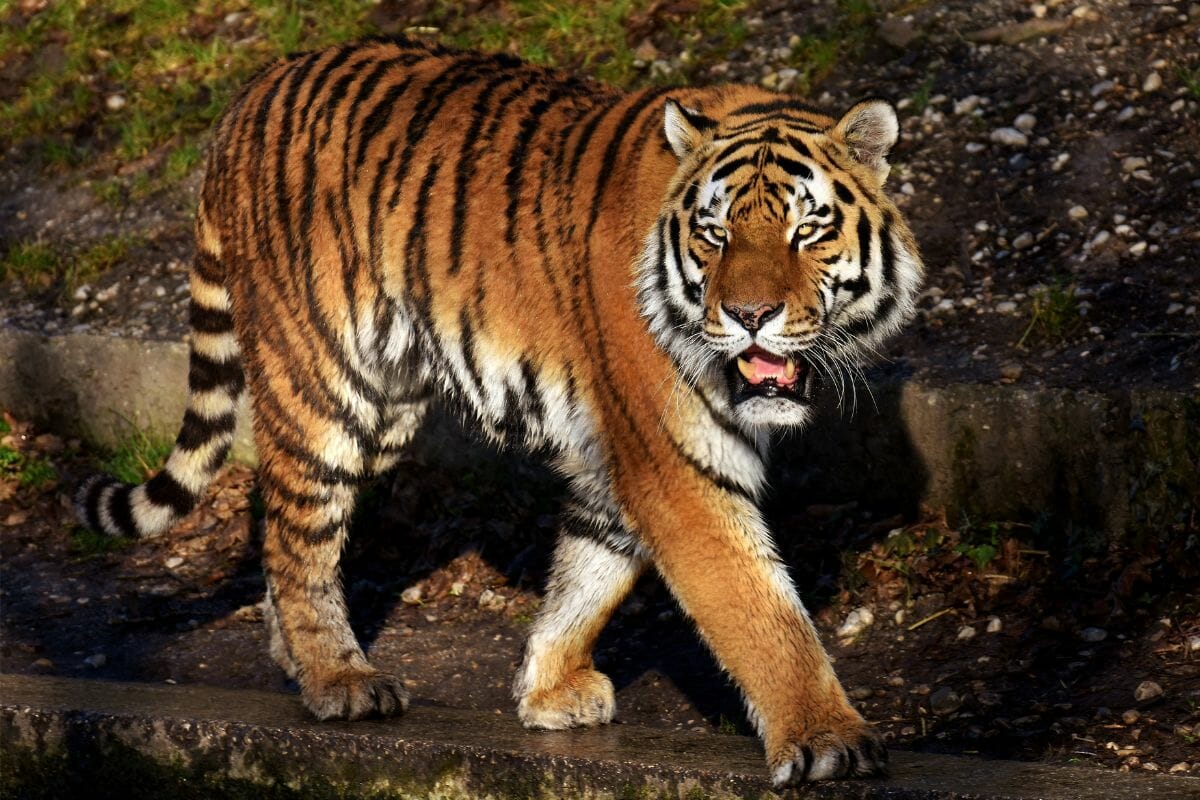Tigers, in their various species, are some of the most amazing animals on the planet.
Visually striking, fierce, and mysterious, they are a species of animal that has consistently captured the imagination of countless people throughout history.

Unfortunately, they are also a species that are consistently threatened with extinction, due to a number of factors they are exposed to.
But why exactly are tigers endangered, and what can be done to help them?
How Many Tiger Species Are There?
Perhaps surprisingly, there are only 6 subspecies within the tiger family – including the Bengal tiger, the Siberian tiger, the Sumatran tiger, the Malayan tiger, Indochinese tiger, and the South China tiger.
Are They All Endangered?
Unfortunately, even though there are 6 subspecies of tigers, they are all considered to be near equally endangered, and their numbers within the wild have dwindled significantly in recent decades.
Why Are Tigers Endangered?
Many might find it strange to think that tigers are so endangered.
Their reputation as a fearsome predator – not to mention the top of their specific food chains – has given them a certain image of an untouchable, unbeatable killing machine.
However, the fact of the matter is that they too are vulnerable to numerous factors, ranging from both the environment to human beings.
Habitat Destruction
Due to human expansion into previously rural, wooded areas, tigers have already lost around 95% of their former habitat, meaning that they have less free space to live, raise their young, hunt, and ultimately thrive.
Deforestation, land clearing for timber, farming, and urban expansion are all to blame for this habitat loss, and it has unfortunately meant that various species of tigers have not had the chance or the resources to return to their former glory.
Climate Change

You might wonder how climate change could possibly affect tiger populations, however rising sea levels along the Indian ocean have caused habitats to be destroyed, animals to drown, ecosystems to be destroyed, and species to migrate – leading to less chances for food.
The same is true around Bangladesh, where sea levels continue to rise each year.
This rise in sea levels is caused by climate change, wherein rising temperatures are causing the polar ice caps to melt, which has led to global rises in sea levels.
This has meant that coastal regions, especially those with lower landmasses, have become more vulnerable.
Poaching
Of course, one of the biggest threats to many species of animals is human poaching.
Poaching is illegal, but the continual black market demand for fur, ivory, and illegal exotic pets has meant that animal species are continually vulnerable.
In various parts of the world, tigers are also hunted for several reasons – including medicine, jewelry, and clothing, not to mention as a source of meat.
Pelts, claws, bones, and meat can all be sold on the black market, and the continued demand has meant that poaching remains rife.
Captive Tigers
Breeding on a commercial scale, as well as the sale of captive tigers, has led to an increase in poaching, and has undermined conservation efforts in various parts of the world.
The continued demand for tiger products is a major problem, and one that groups are always trying to combat.
How Many Tigers Are Left?

As a result of all of these threats and dangers, it is thought that there are around 13,000 tigers left in the world – meaning that they have nearly been hunted into extinction.
What’s perhaps even more depressing, is that only 5,000 of these tigers live in the wild. The rest reside in captivity – either in zoos, enclosures, or wildlife parks.
The remaining species in the wild have become dispersed, spanning India, Russia, and Southeast Asia.
How Can We Help Tigers?
Of course, when it comes to saving tigers, there are some fundamental things that people can do to help.
Pressure Representatives
One of the best ways to help conservation efforts is through protest, and to encourage and pressure elected officials to do their bit towards animal conservation.
This could be done in the way of providing protected lands for animals, or putting concrete plans in place to tackle poachers and criminalize them in a way that would be a proper deterrent.
Send emails, phone their offices, and most importantly, vote for political systems that value the environment and the wildlife that lives around us.
Consume Responsibly
Another way is to not purchase animal products – especially those that include real tiger products. These are generally illegal anyway, but depending where in the world you live they could be an everyday occurrence.
The only way to stop the supply of tiger products entering the black market is to cull the demand, and while this can be a difficult job, one step at a time is better than nothing.
Do Research
Once again, this depends where you are in the world, but do your research on wildlife centers, tourist attractions, and anywhere else that claims to provide sanctuary for tigers.
Many of these can be fronts for illegal poaching activities, and so in depth research could save species.
Donate Money
Another way to provide support is to donate to wildlife (see also: 10 Easy Ways You Can Help To Support Wildlife)charities.
These are generally underfunded, yet provide vital help and efforts to maintaining existing wildlife populations – not to mention combating poaching where they can.
Many of these can be found online, and all require help to function.
Final Thoughts
And there we have it, everything you need to know about tigers, and why the various species continually face endangerment from a variety of sources.
It’s true that tigers, in their various species, are some of the most striking, majestic creatures on the planet, which makes what is happening to them an even greater shame.
Thankfully, there are numerous concerted conservation efforts to try and ensure that these amazing creatures are around for many years to come!
- What Should I Do If A Koala Bites Me? Safety Guide - 2024-05-30
- Are Kangaroos Born Without Hind Legs? A Fascinating Journey - 2024-05-30
- Animals That Look Like Squirrels - 2024-05-30









